
Luster Kaboom

Audio By Carbonatix
Dewey Webb
August 3, 1952-April 26, 2017
Dewey Webb died on a Wednesday morning in the midcentury central Phoenix house in which he lived most of his life. He died in a hospice bed in his living room, with posters for Beyond the Valley of the Dolls and Altman’s 3 Women gazing down on him from the walls.
If you read Phoenix New Times in the ’80s and ’90s, you read Webb, who was a staff writer throughout those decades. He was the paper’s professional humorist, writing stories on peculiar, outré subjects with a mordant, unpretentious wit – biting one-liners that linked together to keenly playful effect.
But perhaps more significantly than his own bylined articles, Webb was, not to put too fine a point on it, The Greatest Headline Writer in the History of Journalism. His gift for puns and cultural allusions was without peer. He wrote most of the headlines for the paper during those years, and his contribution to its sophistication and polish would be hard to overstate.

Dewey Webb
Luster Kaboom
After he left New Times in 2001, Webb did some good writing for other publications, and some PR writing. He did some work as a location scout for the NBA on TBS, suggesting, as few could have done better, offbeat, interesting Valley sights that hadn’t been done to death, to be shown going in and out of commercials.
On the whole, he was underemployed. But he cared for his father in his last years, and he adopted a beagle, and he traveled, and he wrote punishingly funny essays that no amount of cajoling could induce him to share beyond a few friends on his email list.
Anyone who knew Webb well knows that he could be difficult. He was a reflexively skeptical “debunker” of any sort of received wisdom – probably why he thrived at New Times for so long – yet was gullible enough to be taken advantage of at times. His constantly spinning mind made it hard to get him to focus on his own best interests, and his caustic side left him with some alienated enemies, not all of whom, as he would certainly admit, were unjustified in their offense.
But far more people would attest to Webb’s kindness and generosity and, just around the corner from the snide banter, his sweetness. This world, and especially this town Dewey loved so much, is a poorer place without that braying laugh of his, audible all the way down the halls of New Times‘ editorial department. M.V. Moorhead
Anita Collins
June 23, 1965-October 13, 2017
Neighbors knew her as the homeless woman with beautiful blue eyes. Others called her “the Safeway lady.” For years, Anita Collins haunted the stretch of road along Glendale Avenue between Seventh Avenue to 16th Street. Then, one night, she stepped into the street and was hit by a car. She died shortly afterward.
Soon, candles and a cross with her name on it appeared at the intersection where she’d been hit. Residents of the north central neighborhood, who’d gotten used to seeing her every day, started posting their memories on nextdoor.com. As it turned out, just about everyone, whether or not they knew her name, had a story about her kindness, her generosity toward other homeless people in the area, or her sense of humor.

Anita Collins
Luster Kaboom
When it became clear that police had been unable to locate any of Collins’ surviving relatives, those same neighbors decided to make sure that she got a dignified burial. All told, some 50 people helped to plan the memorial service at Our Savior’s Lutheran Church.
“People don’t want to just see her thrown away, because she is part of our landscape,” Tina Lopez explained to Channel 3 (KPHO) at the time. “She is part of our community, and we want to make sure that she has dignity and that she’s not an invisible piece of the landscape. She was a part of our thread of who we were as a neighborhood.” Antonia Noori Farzan
Frank Kush
January 20, 1929-June 22, 2017
It was a hill to almost die on for Arizona State University football players. It was called Mount Kush, located at the base of Camp Tontozona, near Payson, where the Sun Devils trained during the summer. And it was a brutal instrument of ASU coach Frank Kush’s tough-love management style. His players were sent up the rocky, cactus-covered slope as boys. They came down as hardened young men, ready to sacrifice for their team, for their coach.
“That was the greatness of Frank Kush: He brought everybody to a different level and pushed us all to do things and to be better than we ever could have been on our own,” former ASU and Dallas Cowboys quarterback Danny White told Arizona’s Sports Station 98.7 FM after Kush died.
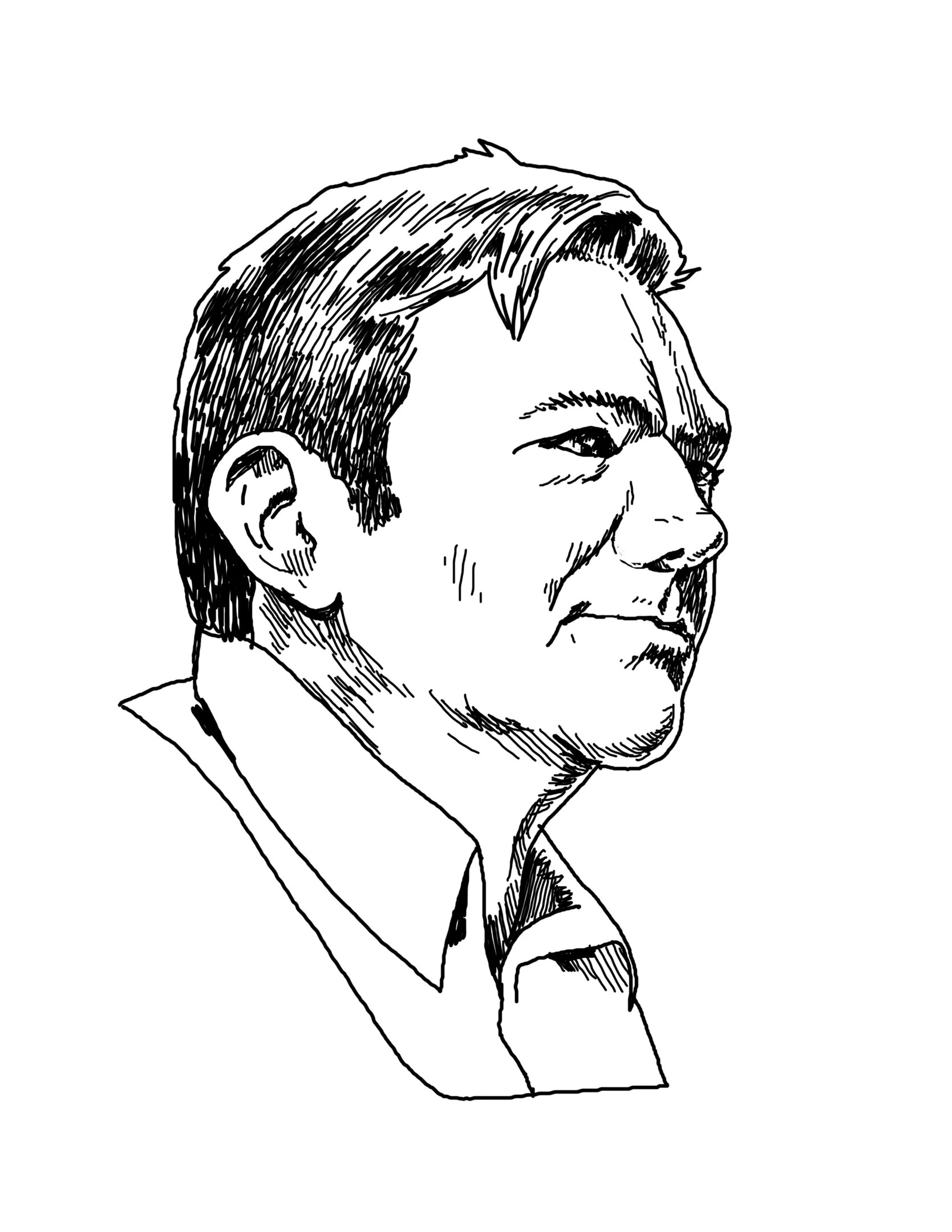
Frank Kush
Luster Kaboom
Kush’s discipline helped mold the Sun Devils into a national power. His teams won 176 games, lost only 54, and tied one in almost 22 seasons. They won six bowl games and finished ranked as high as No. 2 in the nation. However, his career at ASU ended during the 1979 season when he was suspended for allegedly interfering in a suit brought against him by a punter, who claimed he was punched by Kush. Even then, Kush emerged victorious. The jury ruled against the punter and forced him to pay some of the coach’s legal expenses.
After a long separation, Kush returned to ASU as an assistant athletic director in 2000. The field at Sun Devil Stadium was renamed Frank Kush Field. Maybe that hill will be renamed Mount Kushmore. Stuart Warner
Gary Russell
December 28, 1951-April 24, 2017
“Everyone thinks of Gary Russell as just this rock and roll guy,” says the late guitarist’s longtime friend Lucy Payjack. “But he was so much more. He really had a lot of talents; he did a lot of things.”
Those things included a stint as a regular on The Jonathan Brandmeier Show, an early-’80s morning zoo program on contemporary hits radio station KZZP.
“Gary would call in and pretend to be various awful people,” remembers Russell’s former Killer Pussy bandmate Robert X. Planet. “Brandmeier became huge, which he wouldn’t have done without all those Gary Russell characters.”
And then of course there was Clammy the Turd, the fecal character created by Russell to amuse his friends. “Clammy was brilliant,” Planet insists. “Gary put together these little fanzines he Xeroxed and stapled himself, and they’d be all about the adventures of this bowel movement named Clammy. They were just hilarious.”
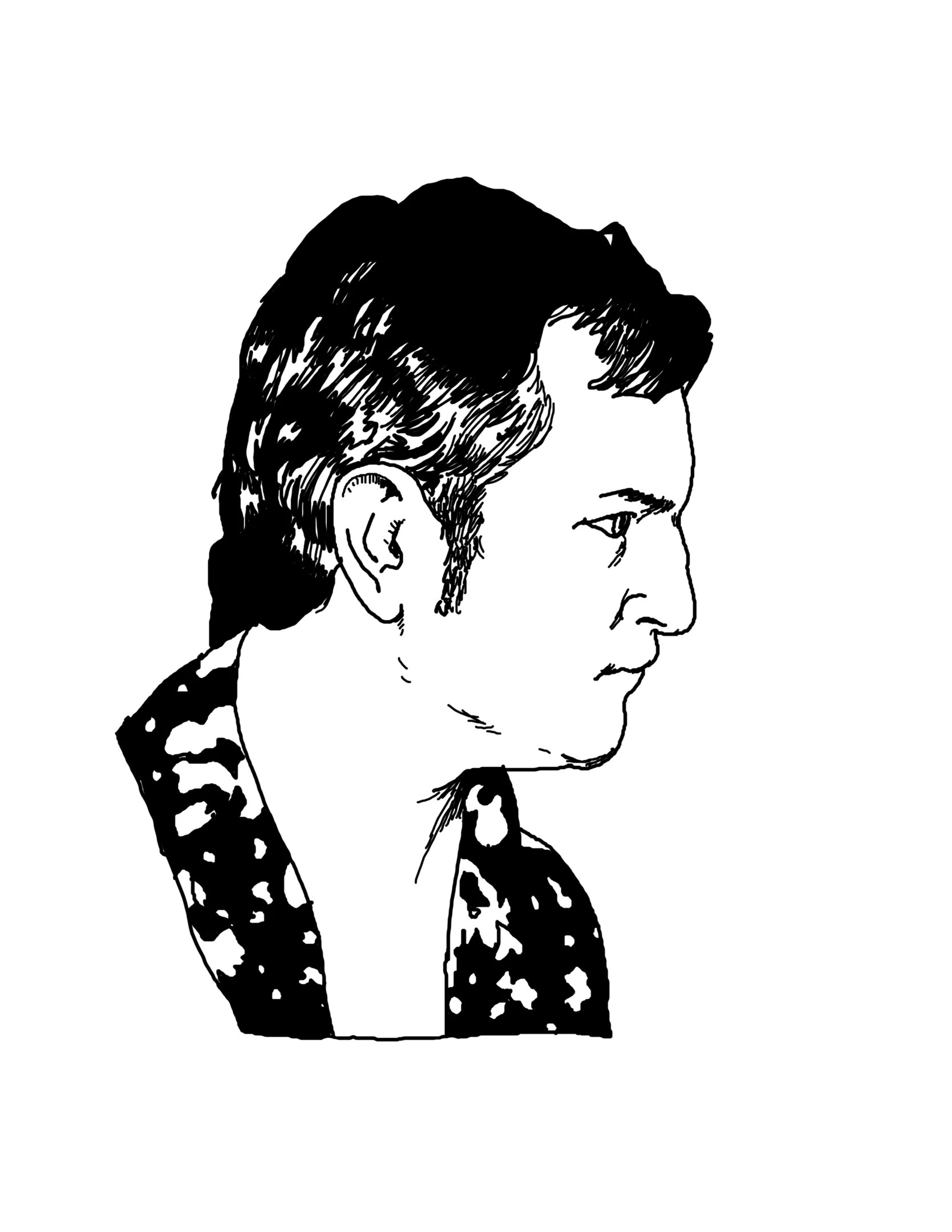
Gary Russell
Luster Kaboom
In 1981, Russell, who died of spinal cancer in April, hooked up with Planet and Payjack to form local punk band Killer Pussy.
“It happened really quickly,” recalls Payjack, who’s best known as Killer Pussy lead singer Lucy LaMode. “We were all in these other bands and we just kind of fell into a band together.”
Russell wrote most of the band’s better-known songs, including “Pepperoni Ice Cream” and “Herpes.” Russell’s “Dial-a-Teen” was a fan favorite that the band included in its recent 30th anniversary reunion concert, a show Russell was too ill to perform at.
“I kind of can’t believe he’s gone,” says Payjack. “We’ve still got his guitar solos and his Killer Pussy songs, and we’ve got Clammy the Turd. But I’m not sure it’s enough.” Robrt L. Pela
Mae Sue Talley
November 27, 1923-March 9, 2017
Mae Sue Talley once said, “I was not of the belief that women had a place and they stayed in it. I just went on to do the things that interested me.”
Her long, full life certainly reflected those sentiments.
After her early life in Indiana and Connecticut, where she did everyday things like volunteer for the Red Cross, get married, and start an engineering company that would manufacture and improve the ejection seat technology for military aircraft, Talley and her husband moved to Phoenix.

Mae Sue Talley
Luster Kaboom
When Talley noticed that her children, having been in school on the East Coast, were a year or two ahead of their public school classmates, she saw an opportunity. The Talley family purchased 10 acres of land around 40th Street and Stanford Drive, constructed a few classrooms and, together with likeminded parents, started the preparatory academy that would eventually become Phoenix Country Day School.
In fact, Talley’s footprint has been left on several iconic institutions around Phoenix, like when she bought the Frank Lloyd Wright-designed Biltmore Hotel, and worked with archivists at Taliesin to restore the property to its former glory after a fire. Or when she purchased and published the state’s first newspaper, The Arizonian. Talley founded, chaired, or served on over 30 nonprofit boards in her lifetime, in addition to her appointment to the Department of Defense, where she worked alongside Sandra Day O’Connor to advocate for women in the service.
Good for everyone, then, that Talley long ago decided not to stay in place. Melissa Campana
Leonard Penuelas-Escobar
1980?-January 12, 2017
Of all the deaths in Arizona in 2017, none were celebrated as much by Arizonans as that of Leonard Penuelas-Escobar.
The man who killed him is considered a hero. Motorist Thomas Yoxall had been driving on the dark, rural stretch of Interstate 10 west of Phoenix on January 12 when he saw Penuelas-Escobar beating a semiconscious state trooper. Yoxall stopped his vehicle, retrieved his loaded handgun from the center console, and shot the attacker in the head, saving the life of Trooper Edward Andersson.
Not much is known about the villain from his horror-movie scene.
Penuelas-Escobar had just been involved in a rollover crash that killed his girlfriend, Phoenix resident Vanessa Lopez-Ruiz, 23. He used a 9 mm handgun to shoot Andersson, who was at the accident scene to provide help. The officer recovered from his injuries.

Leonard Penuelas-Escobar
Luster Kaboom
Officials later said Penuelas-Escobar was a known drug user who was living in the United States illegally. His only recorded law-enforcement contact was once when he tried to cross the border without authorization and was turned back. In 2007, it’s possible he was working as a Mexican federal police officer.
Somewhere out there, perhaps a mother grieves for her son, or Mexican police officers wonder what went wrong with their former friend. Here in Arizona, there is celebration over the timely appearance of Yoxall’s gun. Ray Stern
Chester Bennington
March 20, 1976-July 20, 2017
Less than two months after his musical colleague and friend Chris Cornell of Soundgarden took his own life by hanging, Arizona-born rock star Chester Bennington ended his life the same way. Both Bennington and Cornell had struggled with addiction at different points in their lives. Bennington was open about it, as well as his childhood that was fraught with sexual abuse, and being bullied.
A music fan, in the early ’90s he started singing with a couple of area bands. The first one, Shawn Dowdell and His Friends? was short-lived, but he and Dowdell followed it up with Grey Daze, a grungy rock band that recorded a few albums during their existence, between 1993 and 1998. Not long after is when things went through the roof, in a good way, for Bennington. He got the opportunity from an L.A. record exec to audition with the guys that would go on to form Linkin Park. It worked out and they went on to dominate the nu metal scene, fusing the heavy metal sound with rap, funk, and alt-rock. Other projects included his lifelong dream of filling the shoes of Stone Temple Pilots’ singer Scott Weiland for a bit of time in 2013.

Chester Bennington
Luster Kaboom
Even though he moved to California, Bennington professed his love of Arizona’s sports teams and music scene in interviews – he visited often. The heavily inked front man and Dowdell opened Club Tattoo in Tempe. When he passed, the shop had a memorial service during which they offered tattoos of his signature. Bennington left behind a wife and six children from different relationships. Amy Young
Jenna Taylor
February 26, 1984-May 31, 2017
Audra Sheridan’s friendship with Jenna Taylor was born in the workout center. A fan of cycling, Taylor was a committed gym partner. But occasionally, 43-year-old Sheridan couldn’t muster up the energy to join in. She’d call Taylor hesitantly in the morning, before they were supposed to work out. To her delight, her friend was always game for playing hooky. “Let’s go get a doughnut!” Taylor would exclaim.

Jenna Taylor
Luster Kaboom
Another time, one of Sheridan’s socks was bothering her in their Pilates class. “There was a tiny ruffle on this blue sock, and I’m losing my mind,” Sheridan said. “All through class, I would point to my socks.”
Taylor took off her purple socks and offered to trade. “I’ll take the ruffle,” she said.
“That’s just how she was,” Sheridan says. She still has Taylor’s purple pair.
Sheridan and others were shocked to lose the 33-year-old mother of four. They remember her as a devoted parent and a selfless friend who loved to laugh. While bicycling in Gilbert, Taylor was killed when a truck collided with her.
Taylor’s husband, Cameron, rides with a local cycling team, and after the crash, the cyclists held an early morning ride in Jenna’s memory. Her husband’s voice broke as he thanked the people who came out to honor Jenna. “Life is so short, and it’s just fragile,” Cameron Taylor told the group.
“Love everybody you’re around, and love everybody you’re with,” he said. “And don’t take anything for granted.” Joseph Flaherty
Glen Campbell
April 22, 1936-August 8, 2017
By the time he got to Phoenix, country singer Glen Campbell had married and divorced three times, and earned five of his six Grammy Awards. He moved to Phoenix during the 1980s, where he lived for two decades with his wife Kim Woolen.
Songs like “By the Time I Get to Phoenix,” “Rhinestone Cowboy,” and “Wichita Lineman” propelled Campbell to crossover fame – appealing to fans of both pop and country music. But the rhinestones sometimes lost their shine.
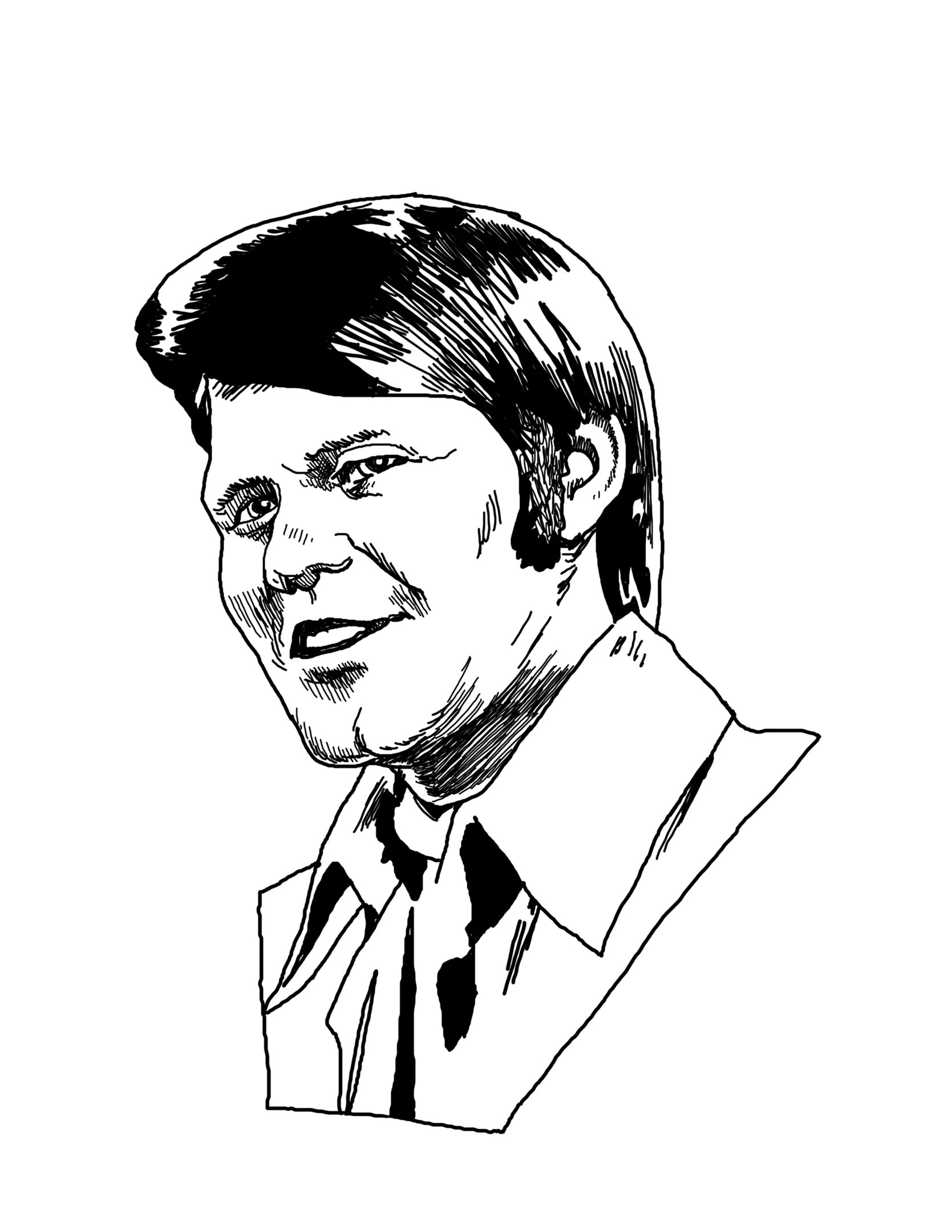
Glen Campbell
Luster Kaboom
In 2003, Campbell spent 10 days in jail after being arrested following a minor car accident on suspicion of drunk driving, hit and run, and assault charges. The next year, “By the Time I Get to Phoenix” was inducted into the Grammy Awards Hall of Fame.
He’d come a long way from Billstown, Arkansas, where he was born the son of a sharecropper and homemaker. He got his first guitar as a kid, started performing in local bars as a teen, and kept playing even after his 2011 diagnosis with Alzheimer’s disease.
In between, he did a brief stint as a Beach Boy, appeared in the film True Grit, and had a TV variety show. Plus, he had eight children.
Campbell launched a goodbye tour in 2011, and won a Grammy Lifetime Achievement Award in 2012. He won his final Grammy in 2015, for the song “I’m Not Gonna Miss You” (with Julian Raymond).
He died in Nashville an eternal cowboy, rhinestones and all. Lynn Trimble
The Rev. Canon Carl G. Carlozzi
June 28, 1940-October 1, 2017
When the bell rang at 3 p.m. to signify the end of the school day at All Saints’ Episcopal Day School in central Phoenix, kids would race from their classrooms to the snack bar. Most days, they would find that Father Carl G. Carlozzi, who was the rector of the school for more than 20 years, was already in line for ice cream.
During his time as chaplain of the Phoenix Fire Department, Carlozzi would use his favorite frozen treats to create community, rolling in a cooler of Dove bars to the firehouse, and giving firefighters a reason to gather around for a visit.
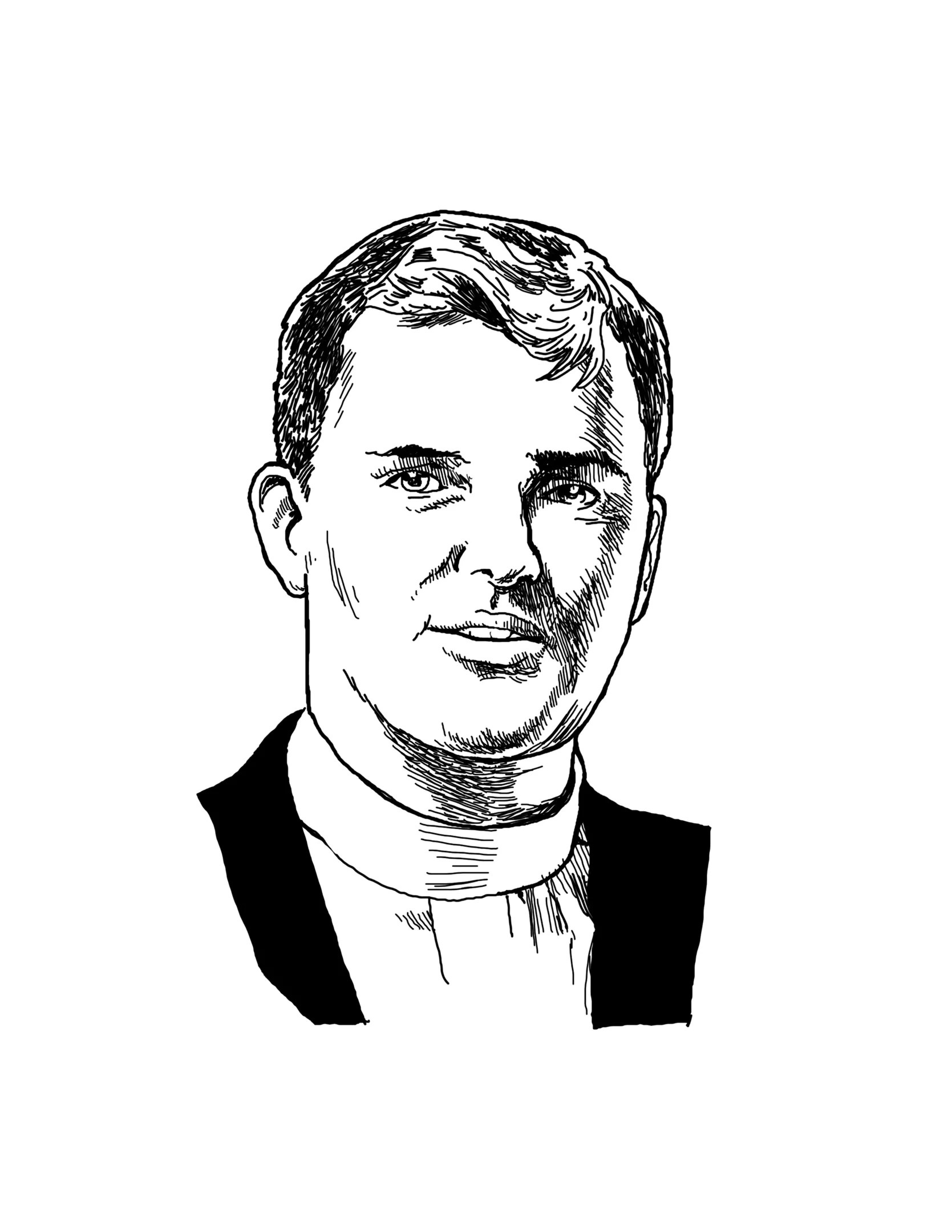
The Rev. Canon Carl G. Carlozzi
Luster Kaboom
Not all of Carlozzi’s days were so sweet. Deployed by FEMA to Oklahoma City and the World Trade Center, he stood shoulder to shoulder with men and women in uniform during some of their darkest hours. He was there to perform the last rites over the 19 Hotshots who died in the Yarnell fire. Before his own death from esophageal cancer in October, he saw a lot of people’s worst days – counseling couples through the loss of a child, or providing spiritual solace at the scene of an accident.
But those who knew him would tell you that his pragmatism, work ethic, and wicked sense of humor served as a light for others in those dark times. And that, when things were good, he would be there, with ice cream, to celebrate. Melissa Campana
Jeff Pettit
July 20, 1971-August 20, 2017
If you went to shows around town in the ’90s, you probably knew, or knew of, Jeff Pettit. Known by many as “El Jefe,” Pettit lived and breathed music. It was on his body – he had a band T-shirt for any occasion. It was his job – he spent years as a Zia Records employee. It was his passion – he attended shows at a tireless rate, popping up at places like Long Wong’s on Mill Avenue, Mesa’s Hollywood Alley, and Tempe’s Nita’s Hideaway for local and touring acts, night after night. He left Arizona for Austin more than a decade ago, where he immersed himself in the music community there. He kept close ties to many Arizonans and popped back in for visits, often including shows in the mix.
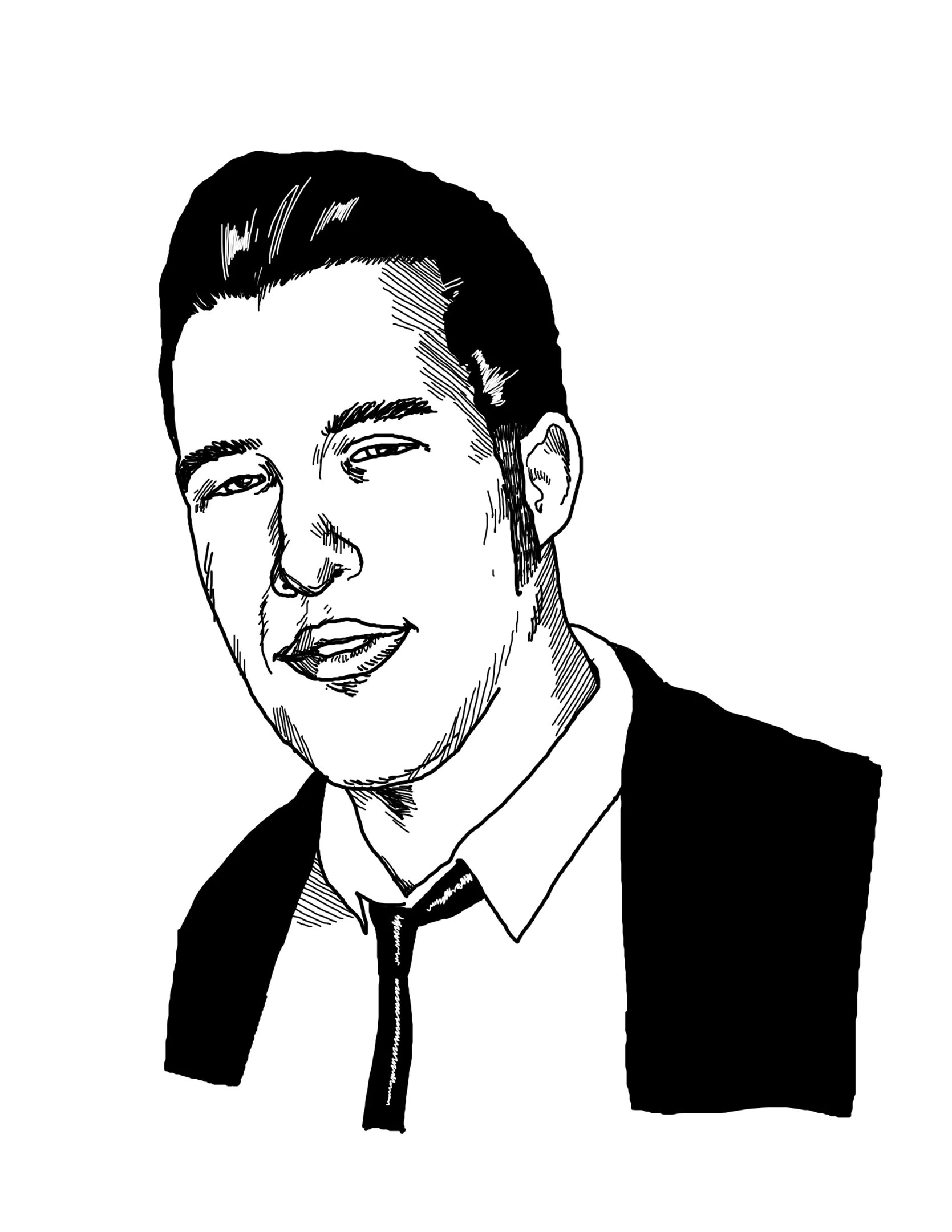
Jeff Pettit
Luster Kaboom
In 2013, he moved to Nashville, along with Jem Cohen and her band The Ettes, and the pair opened the record store Fond Object, which has become a haven for local and visiting music fanatics, and touring bands. It was there where Pettit was found; he passed away while pricing records to be sold.
Memorial shows were held here and Nashville. The Tempe event brought together many devastated loved ones – some of whom traveled for the occasion – who were still shocked by his passing, and beyond sad to lose the friend whose wicked sense of humor was as well-known as his unquenchable thirst for sonic delights. His social media pages continue to fill with messages from the many who miss their friend. Amy Young

Luster Kaboom
Teresa “Terri” Cruz
September 18, 1927-August 17, 2017
These days, Chicanos Por La Causa is one of the largest Hispanic community nonprofits in the entire country, offering everything from business loans to Head Start classes to immigration counseling. But back in the late 1960s, when Terri Cruz helped to found the organization, it was just a group of young, radical Mexican-American activists sitting in a tiny room at Sacred Heart Parish’s Santa Rita Hall, frustrated by the discrimination that they faced.
Cruz, who was in her 30s then, had grown up poor in Tucson as one of 12 children. Her parents both died when she was 5. She left school after the eighth grade, and was married by 15. After moving to Phoenix, she pressed handkerchiefs in a laundry and scrubbed floors in private homes before getting involved in Democratic politics and the burgeoning civil-rights movement.
In CPLC’S early days, Cruz helped organize walkouts at Phoenix Union High School which protested the school’s inadequate funding, low educational standards, and interracial violence. She continued to stay involved as the group’s focus shifted toward opening up charter schools and real estate subsidiaries, and worked as a social services counselor well into her 80s.
Often referred to as the “mother” of Chicanos Por La Causa, Cruz also raised eight children of her own. The survivors listed in her obituary included 39 grandchildren, 105 great-grandchildren, and 52 great-great-grandchildren. Antonia Noori Farzan
Lil Peep
November 1, 1996-November 15, 2017
Few things are permanent. Fame, tattoos, life – they all fade. Post-emo-revival rapper Lil Peep is dying proof.
Born Gustav Ahr in Long Island, New York, the genre-melding musician, who had an amalgam of face tattoos, including the worlds “cry baby” scrawled in large black letters above his right eyebrow, made his fame and gained a cult-like, overwhelmingly teenage fanbase riffing about depression and “drugz” on the streaming platform SoundCloud.

Lil Peep
Luster Kaboom
At 21, Peep’s star was rising. He was rocking his way through the first chorus of his life when it was tragically cut short on his tour bus in Tucson. Folks at the Pima County Medical Examiner’s office say Peep’s death was accidental – the toxic effects of the synthetic opioid fentanyl and alprazolam, often sold as Xanax, as reported by the Arizona Daily Star. He was at the tail-end of his Come Over When You’re Sober tour, set to perform at an Arizona rock club aptly called The Rock. But he never made it on stage.
Peep’s art is outliving him. His angsty hit “Awful Things” charted on Billboard’s Hot 100 for the first time ever just after his death. There’s some cruel foreshadowing in one of the first B-roll shots in the song’s music video, showing empty orange pill vials rolling around on the floorboard of a car.
One lyric hits a different note post-Peep: “Burn me down ’til I’m nothin’ but memories.” Molly Longman
Monika Woolsey
October 18, 1960-September 26, 2017
Richard Fiero, former general manager of The Market By Jennifer’s, still cooks with Monika Woolsey’s vegetables.
Though Woolsey passed away in September, her CSA (Community-Supported Agriculture, terminology for regular deliveries of locally grown produce) from Crooked Sky Farms in Phoenix still comes every weekend. A rotating cast of her friends cook with her vegetables as a tribute.

Monika Woolsey
Luster Kaboom
“We started what we called Monika Mondays,” Fiero says. Before Woolsey died, on Mondays, the two would do something food-focused and outlandish, like go pick 100 pounds of mesquite and make mesquite-crusted cheesecake. “The best thing about Monika was that she made you better,” he says.
Woolsey was a warm personality, a vibrant fixture of the local food world.
She was a farmers market staple. She was a registered dietitian and nutritionist to the Milwaukee Brewers who learned Spanish to better provide for Caribbean-born players. She started a school garden and served as Queen of Phoenix’s Chile Pepper Festival.
Woolsey was perhaps best known for the project she started in 2012, Hip Veggies. Hip Veggies provides canvas market-style bags adorned with bright renditions of produce painted by local artists. One bag features local artist Hugo Medina’s orange mural (at Seventh Avenue and McDowell Road). Another reads “Shut up and eat your nopales.”
One of her driving purposes was to get people to eat vegetables.
Woolsey also worked toward this goal by teaching culinary classes. In one, she taught folks how to “mill” mesquite using a coffee grinder. The fire she had for fresh food from the earth will be missed in a city with so many encroaching chain restaurants.
“Monika was the kind of person who put all of herself in everything,” says Sharon Salomon, a friend of 30 years. “She was special that way.” Chris Malloy
Jack Louis August Jr.
January 7, 1954-January 20, 2017
Jack August made his living by telling stories about others, but he was a colorful character in his own right.
At what wound up being the end of his life, August worked out of a large, beautiful office in the Arizona State Capitol building. For years he’d been the state’s unofficial memory keeper – writing books about leaders like Carl Hayden and issues like water rights. But Secretary of State Michelle Reagan really made it legit by naming him (are you ready for this?) State Historian and Director of Institutional Advancement at the Arizona Capitol Museum in the Division of Library, Archives, and Public Records.
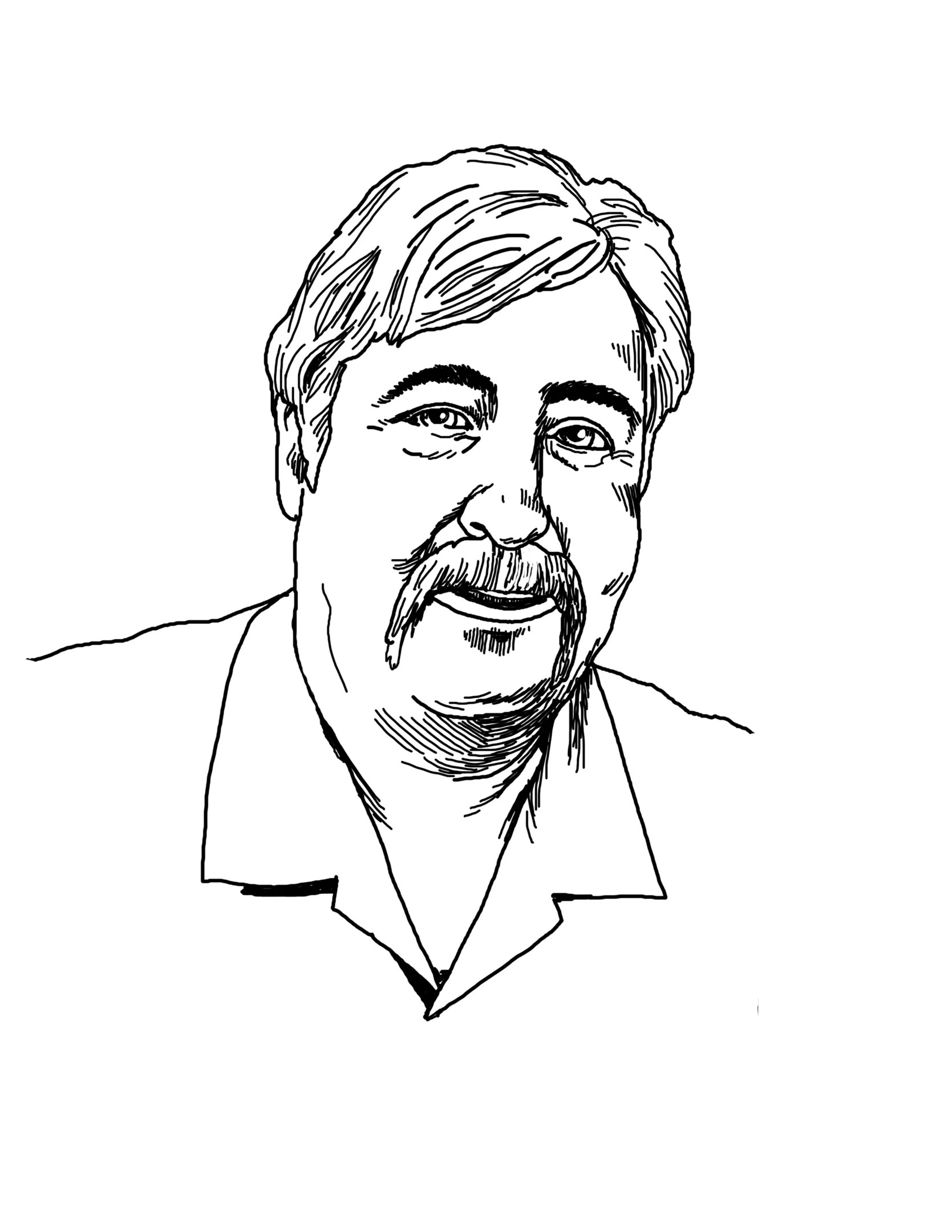
Jack Louis August Jr.
Luster Kaboom
He was proud of that title and during a tour in the fall of 2016, just weeks before he died, August showed off the work being done under a team that was literally digging into former Arizona Governor J. Fife Symington’s family archives.
August was born in Philadelphia and graduated from Yale University (his complete academic resume is far too long for the space available here), but he was an Arizonan first. He taught at many institutions, including Northern Arizona University, Arizona State University, and Prescott College, making his home in Prescott but spending a good deal of time in Phoenix for work.
“I attended several events with Jack at which Arizona’s who’s-who were mulling about,” says Robert Nelson, a former Phoenix New Times staff writer now based in Washington, D.C., who partnered with August on several projects and is currently finishing a book about Symington.
“It was fun to watch players and wannabes gravitate toward him. It was clear what was happening: If they could get friendly with Jack – slip in some argument for why they mattered – he might give them a mention in one of his books or columns. Then they would be bona fide legit,” Nelson continues. “Jack was that guy. He was so respected he was considered one of the authors of the definitive story of this place.” Amy Silverman

The Garnica family
Luster Kaboom
Hector Miguel Flores Garnica
August 16, 1990-July 15, 2017
Maria Del Carmen Raya Garcia
July 16, 1990-July 15, 2017
Hector Daniel Raya Garnica
March 27, 2010-July 15, 2017
Emily Nicole Raya Garnica
September 12, 2013-July 15, 2017
Mia Nathalie Raya Garnica
November 26, 2011-July 15, 2017
Selia Garcia Castaneda
May 24, 1960-July 15, 2017
Maribel Raya Garcia
May 24, 2013-July 15, 2017
Erika Janel Raya Camacho
September 18, 2014-July 15, 2017
Javier Raya Garcia
June 11, 1998-July 15, 2017
Jonathan Leon Villanueva
August 23, 2004-July 15, 2017
Maria Raya Garcia’s birthday party was met with tragedy this summer when she and nine of her family members were swept up in a flash flood in Payson. The family, including her husband, three young children, cousins, and mother, were swimming in the Cold Springs swimming hole in the Tonto National Forest.
The search for the family made national news as it went on for four days and involved 125 volunteers and emergency personnel. On July 25, Maria Raya Garcia, Hector Miguel Garnica, Emily Garnica, Mia Garnica Raya, Daniel Garnica, Selia Garcia Castaneda, Maribel Raya Garcia, Javier Raya Garcia, Erika Raya Garcia, and Jonathan Leon Villanueva were dressed in white and laid to rest in white caskets after a funeral procession from St. Patrick Catholic Community to the Paradise Memorial Gardens in Scottsdale. Hector’s sister says the loss of the family is still painful months later. “It’s getting harder to live without them,” she says. “They said time will heal, and it hasn’t for us.” Lindsay Moore
Katie Lee
October 23, 1919-November 1, 2017
Her career spanned Hollywood, the folk music scene, and the conservation movement. She rubbed elbows with the likes of Edward Abbey and Tom Russell. Burl Ives once famously said, “The best cowboy singer I know is a girl: Katie Lee.”
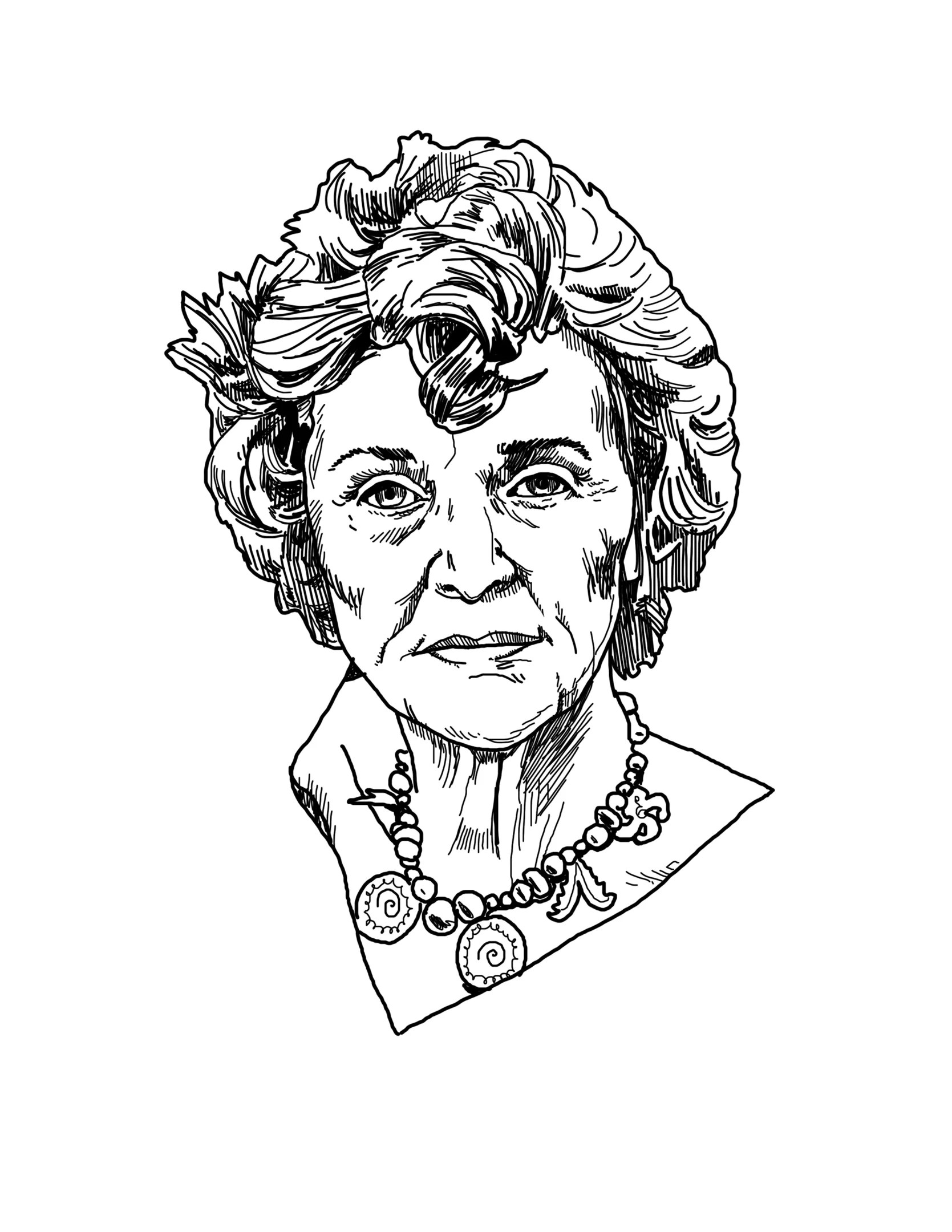
Katie Lee
Luster Kaboom
So naturally, people remember the day they met the legendary Katie Lee.
Kathleen Williamson had just left New York as a 21-year-old aspiring musician when on March 17, 1975, she showed up unannounced at Lee’s house in Jerome, Arizona.
Williamson says, “I knocked on her door with my big red hair and my Brooklyn naiveté. She was so kind. She opened the door and said, ‘Play me a song.'”
Lee wasn’t just a talented guitarist, singer, and songwriter; she also was an idol for environmental activists. Known as the Goddess of Glen Canyon, she did over 30 trips on the Colorado River, documenting her beloved canyon before it was flooded during the creation of Lake Powell, which Lee never referred to as anything but “Rez Foul” or “Loch Latrine.”
In her protest songs, Lee condemned the Glen Canyon Dam and kept a barbed tongue for her adversaries. She was famous for cursing, especially while driving.
“She loved the Earth more than she loved people,” says Williamson, now the executor of Lee’s estate. Lee died in her sleep at the age of 98 in Jerome.
When she was strapped for tuition money as a college student, Williamson sold Lee a prized diamond ring, to which Katie added a gem called chrysocolla. The color perfectly matched the Colorado River.
“Kathleen, when I die, you’re getting this diamond back,” Lee told her. As always, she kept her word. Joseph Flaherty
Paul Weitz
July 25, 1932-October 22, 2017
In the old days, Paul Weitz didn’t chat much about how many times he’d orbited the earth or his two hours and 11 minutes of spacewalking.

Paul Weitz
Luster Kaboom
“We were pretty intimidated by him,” says his daughter, Cindy DiFranco, a retired veterinarian who lives in Flagstaff. “It’s not like we would go up to him and say, ‘How was it?'”
A former fighter pilot in Vietnam, Weitz was in the first crew of America’s first space station, Skylab, and flew as commander on the maiden voyage of the space shuttle Challenger in 1983. Post-space, Weitz served as deputy director of the Johnson Space Center until he retired in 1994.
Weitz is better known in the town he grew up in, Harborcreek, Pennsylvania, than Flagstaff, where he retired with his wife, Suzanne, after 36 years in the space program. He loved Flagstaff and hung out with friends in town for coffee. But he had lost his direction in life after leaving NASA, DiFranco says. No longer responsible for controlling spacecraft, he made extensive “checklists” on 5×7 index cards for his various hobbies, which included fly-fishing and bird-watching. He talked more of the space missions in recent years, and attended Tucson’s annual Spacefest.
When Suzanne, his wife of 62 years, died a year and a half ago, the very private man who was “out of touch with his feelings” felt a profound sense of loss, DiFranco says. He died after a short bout with cancer. Ray Stern

Ebenezer
Luster Kaboom
Ebenezer
December 15, 1988-July 12, 2017
At 28, Ebenezer was the oldest anteater in the United States. A longtime resident of the Phoenix Zoo, he enjoyed snacking on avocadoes, digging in the dirt, and splashing around in his play pool.
Giant anteaters like Ebenezer are native to Central America and South America, and are listed as a vulnerable species by the International Union for Conservation of Nature and Natural Resources. Scientists estimate there may be fewer than 5,000 giant anteaters remaining in the wild, where they’re increasingly under threat as their habitats are destroyed.
Ebenezer spent his life in captivity, allowing him to exceed the typical 26-year lifespan for anteaters. He was a favorite of school groups that visited the zoo, and was often spotted sleeping curled up with his head tucked under his bushy tail.
Nicknamed “Eb” or “Squeezer,” Ebenezer was known for his peaceful nature and sociable disposition. “He was the best at sniffing you all over and sticking his wet nose through the mesh and into your pockets, ears, shoes, and whatever else that smelled interesting to him that day,” zoo officials wrote in a tribute post on Facebook.
This summer, Ebenezer was euthanized after his health began to decline. He left behind 118 descendants, 44 of whom live in zoos in Europe, as well as Beaker, the Phoenix Zoo’s second anteater. Antonia Noori Farzan
Paul Horner
November 5, 1978-September 18, 2017
A lot of what Paul Horner did in life, he did for laughs. And, typically, he was the one laughing the loudest, especially if the joke involved pushing people’s buttons or making things weird.
Horner frequently did both as a comedian, writer, and prankster. And it made him famous.
His absurd internet hoaxes and fake news stories fooled millions into believing that Bill Murray had a party-crashing tour, Louisiana outlawed twerking, or that Horner had the world’s largest penis. He also got laughs from publishing politically oriented hoaxes skewering right-wing causes and aimed at hoodwinking media outlets like Fox News (which he did, twice).
When Horner performed stand-up, his routines were filled with rambling stories, offensive barbs, and bizarre anti-humor that caused many groans. Occasionally, he’d be joined by Fappy the Anti-Masturbation Dolphin, a cartoonish character created to troll the religious right.

Luster Kaboom
Horner never minded that his comedy sometimes met with few laughs. He had another goal altogether.
“I just love fucking with people’s minds,” Horner said in 2013. “It’s funny doing stuff that weirds people out or gets into their heads.” It was the mantra of many of his heroes, including the late Andy Kaufman.
Horner worshipped Kaufman and considered him to be “absolutely brilliant” and an influence. (In an ironic twist, many people initially thought Horner’s death in September from drug overdose was Kaufman-esque hoax.)
And like Kaufman, Horner didn’t care if people weren’t into his humor.
“If you didn’t understand the joke, the prank, the news articles … it really had no effect on him,” says local comedian Erick Biez. “Comedy turns a mirror to show us all how ridiculous we look. My friend liked to be the one to hold that mirror.” Benjamin Leatherman